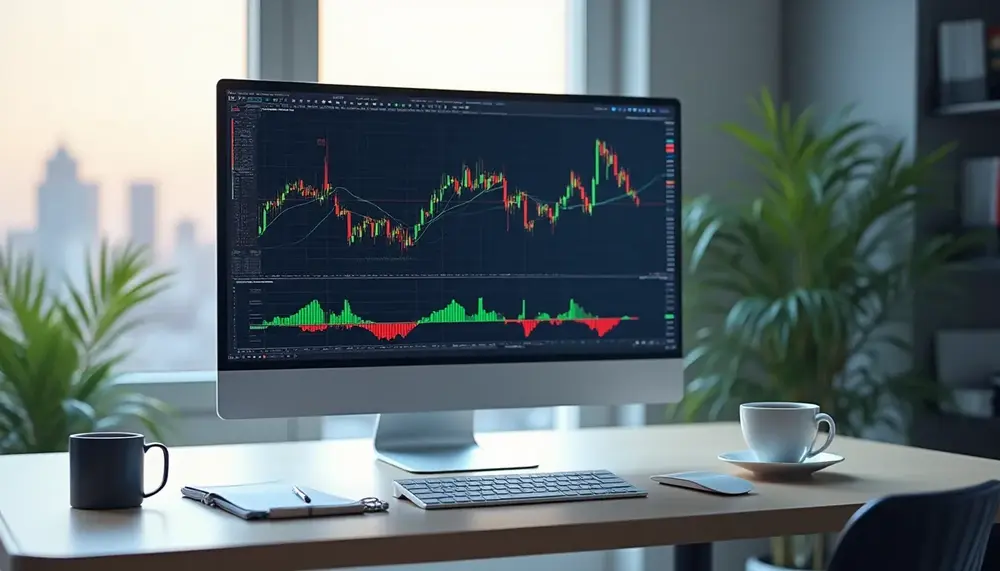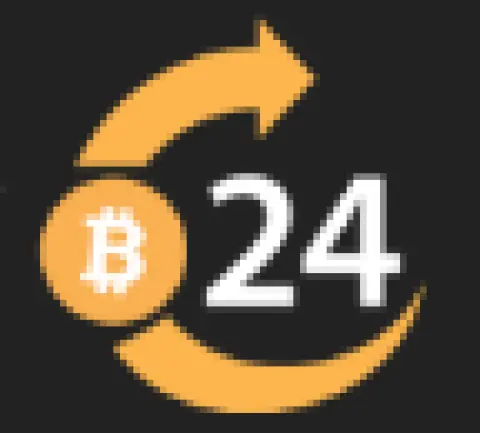Table of Contents:
Defining Futures Contracts: Core Concepts and Legal Obligations
Defining Futures Contracts: Core Concepts and Legal Obligations
At its core, a futures contract is a binding agreement—there’s no wiggle room here—between two parties to buy or sell a specified asset at a predetermined price on a set future date. What’s fascinating is the contract’s unwavering standardization: every detail, from the asset’s quantity and quality to the exact expiration date, is etched in stone by the exchange. This isn’t just for show; it’s what gives futures their high liquidity and transparency, allowing traders to enter and exit positions with confidence.
But let’s not gloss over the legal backbone. Entering a futures contract means you’re not just flirting with the idea of buying or selling—you’re legally obliged to fulfill the terms unless you close your position before expiry. Unlike options, there’s no “maybe I will, maybe I won’t.” The clearinghouse, acting as the impartial referee, guarantees both sides of the deal, reducing counterparty risk to almost zero. That’s a big deal in volatile markets where trust can be in short supply.
It’s also worth noting that these contracts are not private arrangements. They’re traded on regulated exchanges, and every tick, every trade, is subject to strict oversight. Compliance isn’t optional; regulatory bodies enforce transparency, reporting, and margin requirements. In short, the legal obligations embedded in futures contracts are the bedrock that keeps the entire market humming—no loopholes, no shortcuts, just clear, enforceable rules.
Anatomy of a Futures Trade: Execution, Settlement, and Pricing Mechanisms
Anatomy of a Futures Trade: Execution, Settlement, and Pricing Mechanisms
When diving into the nuts and bolts of a futures trade, it’s all about precision and process. Execution begins with order placement—traders submit buy or sell orders through their brokers, which are then routed directly to the exchange’s electronic trading platform. Matching engines work at lightning speed, pairing buyers and sellers in milliseconds, so there’s barely time to blink before your order is filled.
Settlement comes in two flavors: daily and final. Each trading day, the exchange marks all open positions to market, meaning profits and losses are credited or debited based on the day’s closing price. This daily settlement, known as variation margin, keeps everyone honest and solvent. When the contract reaches maturity, settlement can mean physical delivery of the underlying asset or, more commonly, a cash payment reflecting the price difference. The method is always spelled out in the contract’s specs—no guesswork allowed.
Now, about pricing: futures prices don’t just pop out of thin air. They’re shaped by a blend of the current spot price, the time left until expiration, and the cost of carry (think storage, insurance, or interest rates). Sometimes, supply and demand for the contract itself—rather than the underlying asset—can send prices zigzagging in unexpected ways. And don’t forget: news, weather, and even rumors can spark wild price swings, so staying alert is non-negotiable.
- Order Execution: Electronic, rapid, and matched by exchange algorithms.
- Daily Settlement: Mark-to-market ensures real-time profit and loss accounting.
- Final Settlement: Physical delivery or cash settlement, as specified in the contract.
- Pricing Drivers: Spot price, time to expiry, cost of carry, and market sentiment.
Types of Underlying Assets in Futures Trading: Practical Implications
Types of Underlying Assets in Futures Trading: Practical Implications
Futures trading stretches far beyond the stereotypical image of wheat and oil. The diversity of underlying assets is not just a matter of variety—it fundamentally shapes trading strategies, risk profiles, and even the operational logistics for participants. Let’s break down the main categories and their real-world consequences:
- Commodities: Agricultural products, metals, and energy resources dominate this group. Trading futures on physical goods often involves considerations like storage costs, seasonality, and supply chain disruptions. For example, a sudden drought can spike grain futures, while geopolitical tensions may jolt crude oil contracts.
- Financial Instruments: Stock indices, government bonds, and interest rates are the backbone of financial futures. These contracts are typically cash-settled, so there’s no need to worry about warehouses or delivery trucks. Their liquidity and correlation with broader economic trends make them a favorite for portfolio hedging and macro speculation.
- Currencies: Currency futures offer a transparent, regulated alternative to the over-the-counter forex market. They’re essential for exporters, importers, and global investors looking to lock in exchange rates or speculate on macroeconomic shifts. Volatility here can be fierce, especially during central bank announcements.
- Cryptocurrencies: Bitcoin and Ethereum futures have burst onto the scene, attracting both institutional and retail traders. These contracts introduce unique risks—think extreme price swings and regulatory uncertainty—but also open doors for hedging digital asset exposure in a way that’s standardized and centrally cleared.
In practice, the type of underlying asset dictates not only the contract’s technical specifications but also the trader’s approach to risk, required expertise, and even margin requirements. A soybean farmer’s hedging needs look nothing like a tech investor’s index strategy, and that’s the real art of futures trading—matching the asset to the objective, every single time.
Mandatory Delivery versus Cash Settlement: Understanding Contract Maturity
Mandatory Delivery versus Cash Settlement: Understanding Contract Maturity
When a futures contract reaches maturity, the settlement method becomes a pivotal detail—one that can have major operational and financial consequences for traders. Two distinct approaches exist: mandatory delivery and cash settlement. Each has its own quirks, risks, and strategic implications.
- Mandatory Delivery: This method requires the actual transfer of the underlying asset when the contract expires. For example, if you hold a live cattle future at maturity, you’re on the hook for physical delivery—no ifs, ands, or buts. This can mean dealing with transportation, storage, and quality inspection. For many, especially speculators, this is more hassle than it’s worth, so they close out positions before expiry. But for producers and end-users, it’s a direct route to the real commodity, locking in prices and supply.
- Cash Settlement: Here, there’s no exchange of the physical asset. Instead, gains or losses are settled in cash, based on the difference between the contract price and a final reference price (often an index or official market close). This approach is common for financial futures, like equity indices or interest rates, where physical delivery is impractical or impossible. Cash settlement simplifies logistics, reduces delivery risk, and broadens participation, since traders don’t need to handle the underlying asset at all.
Choosing between these settlement types isn’t just a technicality—it shapes everything from margin requirements to trading strategy. For some, the prospect of mandatory delivery is a dealbreaker; for others, it’s the very reason to trade futures in the first place.
Key Market Participants: Hedgers, Speculators, and Their Strategic Goals
Key Market Participants: Hedgers, Speculators, and Their Strategic Goals
In the world of futures trading, the motives and methods of market participants are as varied as the contracts themselves. Each group plays a distinct role, shaping liquidity, volatility, and even the direction of prices—sometimes in ways that surprise even seasoned pros.
- Hedgers: These participants are all about risk control. Their core objective? To stabilize future costs or revenues by locking in prices today. For instance, an airline might hedge against rising fuel prices, while a pension fund could shield itself from interest rate swings. What’s fascinating is how hedgers often use complex strategies—like spreading positions across multiple contracts or maturities—to fine-tune their exposure. This isn’t just about protection; it’s about optimizing financial planning in the face of uncertainty.
- Speculators: Speculators inject energy and liquidity into the market. Their aim is to profit from price fluctuations, often using leverage to amplify returns. Unlike hedgers, they have no underlying exposure to the asset itself. Some speculators specialize in ultra-short-term trades, capitalizing on tiny price moves, while others ride longer trends. Their presence can lead to sharper price movements, but they also absorb risk that hedgers want to offload. In volatile markets, speculators sometimes act as shock absorbers, providing much-needed counterparties when others step back.
Ultimately, the interplay between hedgers and speculators creates a dynamic ecosystem. Without hedgers, the market would lack real-world relevance; without speculators, it would be slow and illiquid. Their strategic goals may differ, but together, they keep the wheels of the futures market turning—often in unexpected ways.
Applied Futures Trading: Real-World Hedging and Speculation Examples
Applied Futures Trading: Real-World Hedging and Speculation Examples
Seeing futures trading in action brings theory to life. Let’s zoom in on concrete, real-world scenarios where these contracts serve as vital tools for both risk management and profit seeking.
- Airline Fuel Hedging: An international airline, facing unpredictable jet fuel prices, enters into long-term futures contracts for aviation fuel. By locking in a purchase price months in advance, the airline can set ticket prices with greater confidence, sidestepping sudden cost spikes that could erode profit margins. This proactive approach helped several major carriers avoid financial distress during periods of oil market turbulence.
- Wheat Farmer’s Price Protection: A wheat farmer, eyeing a bumper harvest, worries about falling prices at harvest time. She sells wheat futures contracts before the crop is ready. If market prices drop, the gain on her futures position offsets the lower cash price for her wheat, ensuring stable income. This strategy is widely used in agriculture to weather volatile seasons.
- Index Speculation by a Hedge Fund: A hedge fund manager predicts that a major stock index will rally after a central bank announcement. Instead of buying all the index’s constituent stocks, the fund takes a large position in index futures. When the index jumps, the fund profits from the leveraged exposure, magnifying returns compared to a traditional stock portfolio.
- Currency Risk Management for Exporters: A European electronics exporter expects to receive payment in US dollars six months from now. To avoid losses from a potential euro appreciation, the company sells euro futures contracts. If the euro strengthens, the gain on the futures position offsets the reduced value of the dollar revenue.
- Bitcoin Volatility Trading: A proprietary trading firm anticipates a sharp move in Bitcoin’s price after a regulatory decision. Rather than buying or selling Bitcoin directly, the firm uses Bitcoin futures to take a position. This approach allows for efficient risk control and avoids the complexities of holding and transferring digital assets.
These examples show how futures contracts are woven into the fabric of modern finance and commerce. Whether shielding against loss or chasing opportunity, applied futures trading is about turning uncertainty into a strategic advantage.
Regulatory Framework and Risk Management in Futures Markets
Regulatory Framework and Risk Management in Futures Markets
Modern futures markets operate under a rigorous regulatory environment designed to safeguard participants and maintain market integrity. Regulatory bodies such as the Commodity Futures Trading Commission (CFTC) in the United States and the European Securities and Markets Authority (ESMA) in Europe set the ground rules. These authorities enforce transparency, mandate regular reporting, and oversee market conduct to deter manipulation and insider trading.
- Exchange Surveillance: Exchanges themselves are required to monitor trading activity in real time, flagging suspicious patterns and enforcing position limits to prevent excessive speculation or market cornering.
- Margin Requirements: Regulators set minimum margin levels, ensuring that traders maintain sufficient collateral to cover potential losses. This system reduces the risk of default and promotes orderly liquidation if positions move against a participant.
- Central Clearing: All standardized futures contracts are cleared through central counterparties. This mechanism isolates credit risk, as the clearinghouse becomes the buyer to every seller and the seller to every buyer, effectively guaranteeing contract performance.
- Risk Disclosure and Suitability: Firms must provide clients with clear, comprehensive risk disclosures. In many jurisdictions, suitability assessments are required to confirm that clients understand the risks and have the financial capacity to absorb losses.
- Stress Testing and Capital Adequacy: Clearinghouses and large market participants undergo regular stress tests to ensure resilience in extreme market conditions. Regulatory capital requirements further bolster the financial system’s stability.
In practice, these frameworks foster confidence, enabling both institutional and retail traders to participate in futures markets with a high degree of trust. The blend of oversight, transparency, and robust risk controls is essential for a marketplace where leverage and volatility are the norm, not the exception.
The Role and Structure of Futures Options in Derivative Trading
The Role and Structure of Futures Options in Derivative Trading
Futures options add a unique layer of flexibility and strategic depth to the derivatives landscape. Unlike standard futures contracts, these instruments grant the holder the right—but not the obligation—to enter into a specific futures position at a predetermined price before a set expiration date. This simple difference unlocks a world of nuanced trading opportunities and risk management tactics.
- Risk-Limiting Features: The primary appeal of futures options lies in their asymmetric risk profile. Buyers risk only the premium paid, while potential gains remain theoretically unlimited for calls or substantial for puts. This makes them attractive for traders seeking exposure without the open-ended risk of direct futures positions.
- Strategic Versatility: Futures options can be combined into complex spreads, straddles, or strangles, allowing market participants to express views on volatility, directional movement, or even the passage of time. Hedgers might use options to insure against adverse price swings while retaining upside potential.
- Premium Pricing and Greeks: The value of a futures option—its premium—is influenced by factors such as volatility, time to expiration, and the relationship between the strike price and the underlying futures price. Traders often analyze "Greeks" (delta, gamma, theta, vega) to fine-tune their positions and manage risk dynamically.
- Liquidity and Standardization: Most futures options are exchange-traded and standardized, ensuring transparency and efficient price discovery. This structure also means that options can be bought or sold quickly, supporting both speculative and hedging strategies in fast-moving markets.
In essence, futures options empower traders to craft tailored risk-return profiles, capitalize on market inefficiencies, and navigate uncertainty with greater precision. Their role in derivative trading is not just supplementary—it’s often the linchpin for sophisticated portfolio management and tactical market engagement.
Practical Takeaways: How Futures Trading Solves Specific Market Needs
Practical Takeaways: How Futures Trading Solves Specific Market Needs
Futures trading is more than a theoretical construct—it’s a practical toolkit for tackling real-world financial and operational challenges. Here’s how it directly addresses unique market needs that would otherwise remain unsolved or inefficiently managed:
- Enabling Price Discovery in Opaque Markets: Futures exchanges aggregate diverse opinions and information, producing transparent prices for assets that might otherwise lack reliable benchmarks. This is crucial for commodities or emerging assets where spot markets are fragmented or illiquid.
- Facilitating Capital Efficiency: By allowing margin trading, futures free up capital for businesses and investors. This means participants can hedge or speculate without tying up large amounts of cash, supporting growth and operational flexibility.
- Supporting Interconnected Global Supply Chains: Multinational firms use futures to synchronize pricing and risk management across borders, aligning procurement, production, and sales in different currencies and regulatory environments.
- Providing Access to Otherwise Inaccessible Markets: Futures contracts open doors to markets that might be difficult or costly to enter directly, such as certain foreign currencies, energy products, or niche commodities.
- Enabling Portfolio Diversification and Tactical Adjustments: Investors and asset managers use futures to swiftly rebalance portfolios, gain exposure to new sectors, or implement tactical shifts in response to macroeconomic changes—often with minimal transaction costs.
- Enhancing Market Resilience During Stress Events: In times of crisis or volatility, futures markets remain open and liquid, providing a critical mechanism for price formation and risk transfer when other markets may seize up.
Ultimately, futures trading stands out as a versatile solution for market participants who demand transparency, efficiency, and adaptability in an ever-evolving financial landscape.
Experiences and Opinions
Many users find futures trading exciting yet daunting. The complexity of the contracts often overwhelms newcomers. Users consistently mention the importance of understanding the underlying assets. Misjudgments about price movements can lead to significant losses.
A common challenge is the need for quick decision-making. Many traders report feeling pressured to act swiftly based on market fluctuations. This urgency can lead to mistakes, especially for inexperienced traders. A structured approach often helps mitigate impulsive decisions.
Education is key. Numerous platforms offer resources to help users navigate futures trading. For instance, resources on risk management strategies are invaluable. Many users emphasize the need for comprehensive training before entering the market. A lack of preparation often results in costly errors.
Risk management tools are essential. Users frequently highlight the importance of stop-loss orders. These tools can limit losses and protect capital. However, some traders find them difficult to set up effectively. Misconfigured stop-loss orders can lead to unexpected outcomes.
In terms of platforms, traders have varied experiences. Many users recommend prop trading firms for their support. Platforms like Prop Firm Match provide comparisons of different firms. This resource helps users find suitable trading environments tailored to their needs.
Another key aspect is emotional control. Users often discuss the psychological challenges of futures trading. The highs and lows of trading can lead to stress and anxiety. Maintaining discipline is crucial for long-term success. Many traders recommend setting clear goals to stay focused.
Market volatility presents both opportunities and risks. Users report that significant price swings can be profitable. However, these fluctuations also increase the potential for losses. Understanding market indicators is vital for making informed decisions.
Communities and forums provide a space for sharing experiences. Users often exchange tips and strategies. However, opinions vary widely. Some traders advocate for aggressive strategies, while others prefer conservative approaches. Engaging with a community can offer valuable insights but also leads to conflicting advice.
Technical analysis is another frequent topic among traders. Users mention the necessity of mastering chart patterns and indicators. Many believe that strong technical skills improve trading outcomes. However, some warn against relying solely on technical analysis. Combining it with fundamental analysis often yields better results.
Finally, the legal obligations tied to futures contracts cannot be overlooked. Users emphasize the importance of understanding these commitments. Failing to comply can result in serious financial consequences. Many recommend consulting legal experts before engaging in trading to ensure compliance with regulations.
Overall, experiences in futures trading highlight the need for education, emotional control, and effective risk management. Each trader's journey is unique, shaped by personal goals and market conditions. Continuous learning and adaptation are essential for success in this challenging field.
FAQ About Futures Trading: Essential Questions Answered
What is a futures contract?
A futures contract is a standardized legal agreement to buy or sell a specific asset at a predetermined price on a future date. These contracts are traded on regulated exchanges and oblige both buyer and seller to fulfill the deal, unless the position is closed before expiry.
How does settlement work in futures trading?
Futures settlement occurs either by physical delivery of the underlying asset or by cash settlement, depending on the contract. Most contracts involve daily mark-to-market settlements, while final settlement at contract maturity specifies whether actual delivery or a cash payment will be made.
Who are the main participants in the futures market?
The primary participants are hedgers and speculators. Hedgers use futures to manage price risk for their business operations, while speculators seek to profit from price fluctuations. Both groups are vital for market liquidity and risk transfer.
What types of assets can be traded with futures contracts?
Futures contracts can be based on a wide variety of underlying assets, including commodities like oil and wheat, financial instruments such as stock indices and bonds, currencies, and even cryptocurrencies like Bitcoin.
Are futures markets regulated?
Yes, futures markets are strictly regulated by financial authorities and exchanges. Regulations ensure transparency, enforce reporting and margin requirements, and employ central clearinghouses to minimize counterparty risk and maintain market integrity.











